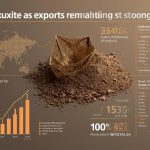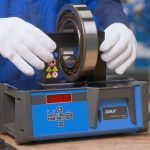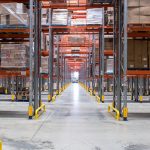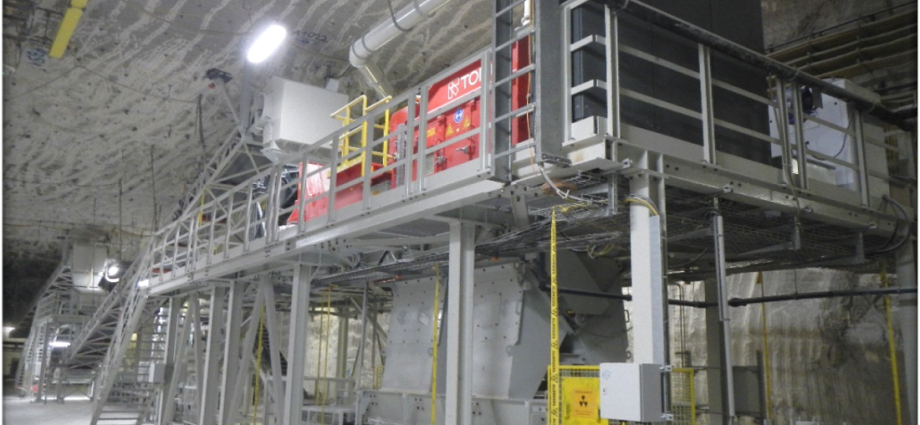The underground X-ray Transmission (XRT) sorting pilot plant at the Zielitz mine, developed by TOMRA in collaboration with K+S, sets a new benchmark for efficient, sustainable potash mining. The pilot project, which has been running since 2022, has successfully addressed its main objective of removing barren waste underground, with the potential of reducing stockpiling and improving ore grade of hoisted material through the shaft, while enhancing overall operational efficiency. The project is ongoing, exploring ways to optimize the separation performance, increase throughput and implement the new technology into the mine planning process.
TOMRA Mining and K+S Minerals and Agriculture have reached a major milestone in their ongoing technological collaboration at the Zielitz mine in Germany with the successful underground sorting pilot plant for rock salt pre-separation. The project aims to minimize stockpiling, reduce the bottleneck at the mineshaft, and accommodate further mine expansion. The underground pilot plant is equipped with a TOMRA XRT sorter specially adapted to achieve K+S’s objectives – a unique solution specifically developed for the mine’s conditions and requirements.
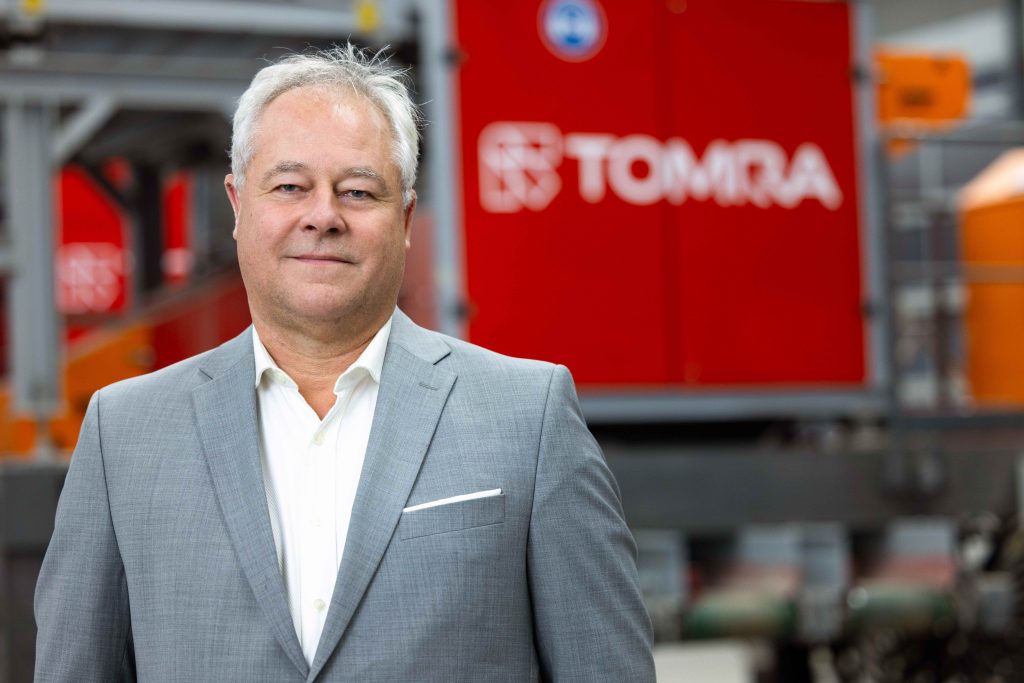
This pilot project is the latest development in the long-standing collaboration between TOMRA and K+S, Europe’s leading salt producer and a global supplier of potash minerals. Their collaboration began in 1998, when the first TOMRA color sorter was installed at the Braunschweig-Lüneburg site at Grasleben. Over the years, the two companies have worked together on numerous projects and conducted extensive testing for various plants.
The underground mining challenge at Zielitz
K+S initiated the project as part of its focus on identifying practical, long-term solutions to improve sustainability and enhance productivity in its production and supply chains. The company partnered with TOMRA to explore ways of removing barren waste underground, significantly reducing stockpiling – hence reducing the mine’s environmental impact – and improving grade through the shaft.
“The handling of backfill has been an important issue in mining for decades. The ever-increasing demands of deeper and more complex deposits, the economic necessity for economies of scale and increasing environmental regulations must be met. The lean manufacturing approach of removing worthless minerals from the material stream as early as possible and further processing the valuable minerals in a concentrated form promises numerous advantages,” said Dr. Isabell Pfaffe and co-authors in a recent technical paper on the project.
The sorting plant was installed underground and commissioned in 2022. It features TOMRA’s XRT technology to identify and remove waste material – predominantly halite (NaCl) – with a potassium (K2O) content below 2%.
By sorting the mined material underground to remove waste material and redirect parts of it for backfill, the pilot plant successfully addresses the three key challenges at the Zielitz site. The first one is stockpile reduction: as the large quantity of stockpiled material implies a major environmental protection effort. Through this project, K+S aims to find a solution to reduce the amount of barren material going to the stockpile as much as possible. The second is the bottleneck at the mineshaft: the main shaft hoists up to 45,000 metric tons per day, leaving no capacity for future expansion or return of processed waste underground. Finally, the project aims to resolve infrastructure constraints in view of a future mine extension planned over 40km, as there is no transport capacity or facilities to return processed waste as backfill into the mined-out areas.
Innovative approach and collaboration for a custom solution
For the Zielitz pilot project, TOMRA developed a unique solution based on a TOMRA COM XRT 2.0 1200 sorter featuring a sensing system adapted with setup and algorithms specially designed to achieve the goals set by K+S. The process begins with a feed system equipped with an adjustable flow divider at the main belt, which directs the raw salt feed to a double-deck vibration screen. The material is separated into defined size fractions, and the oversize and undersize fractions are returned to the main belt. The screen mats are interchangeable, allowing operators to try different size ranges. Once screened, the material is conveyed to the XRT sorter, which identifies potash rocks and removes unwanted sodium salt, which has a lower atomic density. The material identified as waste, with a potassium content below 2.0%, is diverted to a conveyor for backfill, while the concentrate is fed back to the main belt and from there to the shaft.
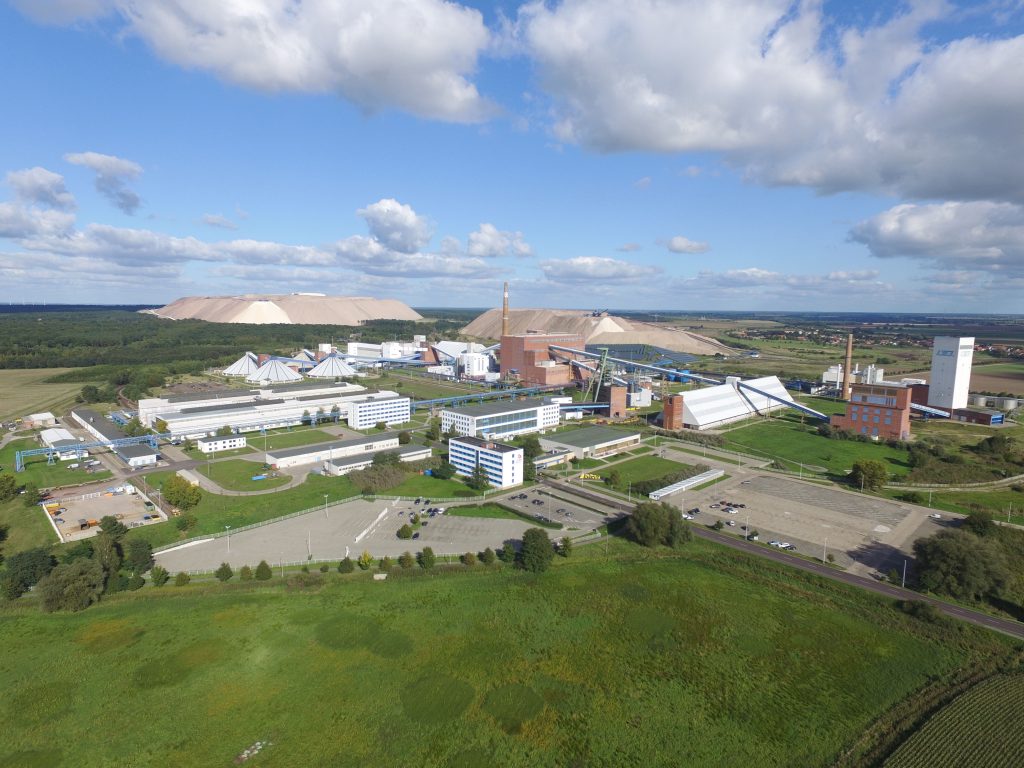
The installation of the pilot sorting system underground came with its own set of logistical challenges, most notably transporting the 18-ton XRT sorter through the shaft. The machine had to be carefully disassembled, lowered in components and reassembled onsite. TOMRA’s experience in the underground installation of sorting equipment was extremely valuable in successfully addressing this challenge together with the K+S personnel on site.
Impressive results and a vision for the next phase
The pilot project has successfully achieved all the objectives and has demonstrated that the TOMRA XRT sorter can successfully remove liberated halite. The pilot plant currently processes 50 tons per hour. It removes up to 50% of the feed as barren rocks underground, reducing the load to the shaft and allowing for an increase in mining capacity. Part of the barren waste, which has a potassium content below 2,0%, is used as backfill, reducing the amount going to stockpile. The remaining 50% of the feed, with a nearly doubled ore grade compared to the previous set-up, is blended into the main material stream to the shaft and hoisted to the processing plant.
With the successful results achieved by the pilot plant, the companies are looking at the next phase: exploring the scaling up of capacity and integrating TOMRA’s AI-powered technology, OBTAIN. This groundbreaking technology leverages Deep Learning to accurately identify the properties of each individual particle, even when they are touching on the belt – consequently, irrespective of the sorter’s capacity – achieving unparalleled precision and reliability. The result is single-particle precision in high-throughput ore sorting.
“Our vision of what can be achieved in a further stage, introducing more sorters with OBTAIN, is to sort as many tons of ROM as possible. The sorted waste, which is about half of the sorter feed, is used for backfilling, and the remaining amount of high-grade product is conveyed to the shaft,” explains Jens Michael Bergmann, Global Segment Manager Industrial Minerals at TOMRA Mining. “The aim is to further increase the K2O grade at the shaft, which will mean hoisting the same tonnage but at a higher grade in the future. This will automatically reduce stockpiling, and the downstream processing steps at the surface installations will be more efficient due to the higher potassium grade of the hoisted raw material. We have started testing OBTAIN to see how much we can increase the sorter capacity while maintaining the same performance. The initial trials at the TOMRA test center have shown very promising results.”
The Zielitz pilot plant project has already attracted the interest of other mining companies with similar situations and environmental challenges. By combining advanced engineering and sensor technology, AI-powered data processing, TOMRA’s extensive experience and the solid collaborative relationship with K+S, this project demonstrates the transformative potential of sensor-based underground pre-separation.
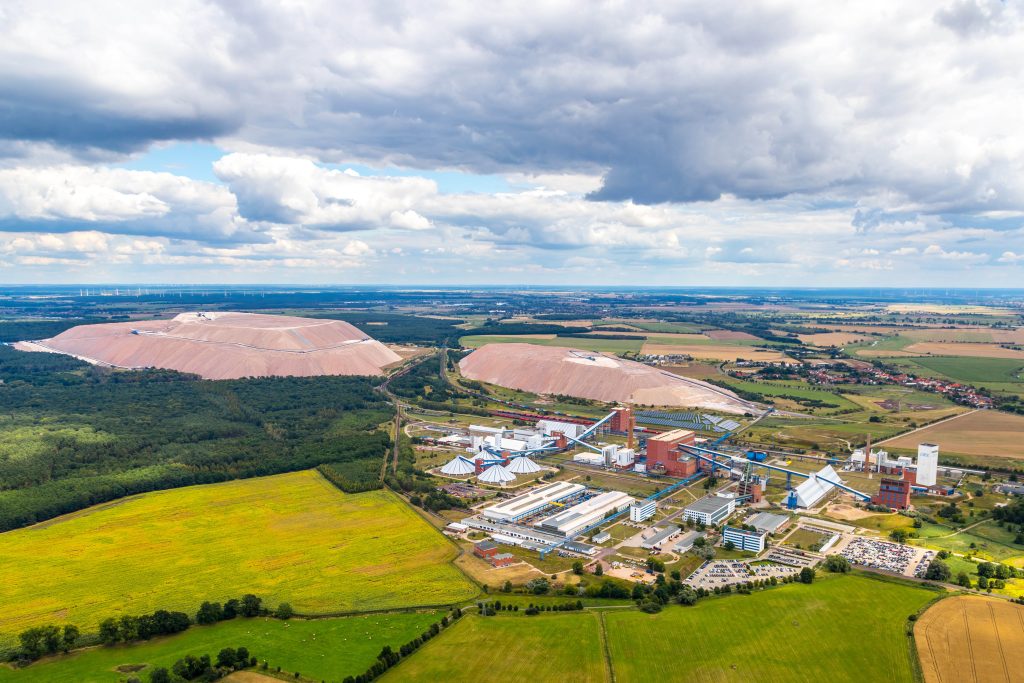
TOMRA Mining
TOMRA Mining designs and manufactures sorting technologies for the global mineral processing and mining industries. The company’s solutions aim to transform how natural resources are processed to maximize recovery and minimize our ecological footprint.
As the global market leader in sensor-based ore sorting, TOMRA Mining is responsible for developing and engineering intelligent technology to deliver resource efficiency and reshape the industry for the better.
Follow TOMRA Mining on Facebook @TOMRA.Sorting.Mining, X @TOMRAMining, LinkedIn at TOMRA Mining and on YouTube at TOMRA Mining.
TOMRA Mining is a part of TOMRA Group. TOMRA was founded on an innovation in 1972 that began with the design, manufacturing and sale of reverse vending machines (RVMs) for automated collection of used beverage containers.
Today, TOMRA is leading the resource revolution to transform how the planet’s resources are obtained, used and reused to enable a world without waste. The company’s business divisions are TOMRA Food, TOMRA Recycling and TOMRA Collection.
With approximately 105,000 installations in over 100 markets worldwide, TOMRA reported total revenues of EUR 1,348 million and EBITA of EUR 176 million in 2024. The Group employs 5,000 globally and is publicly listed on the Oslo Stock Exchange. The company headquarters are in Asker, Norway.
For further information about TOMRA, visit www.tomra.com







